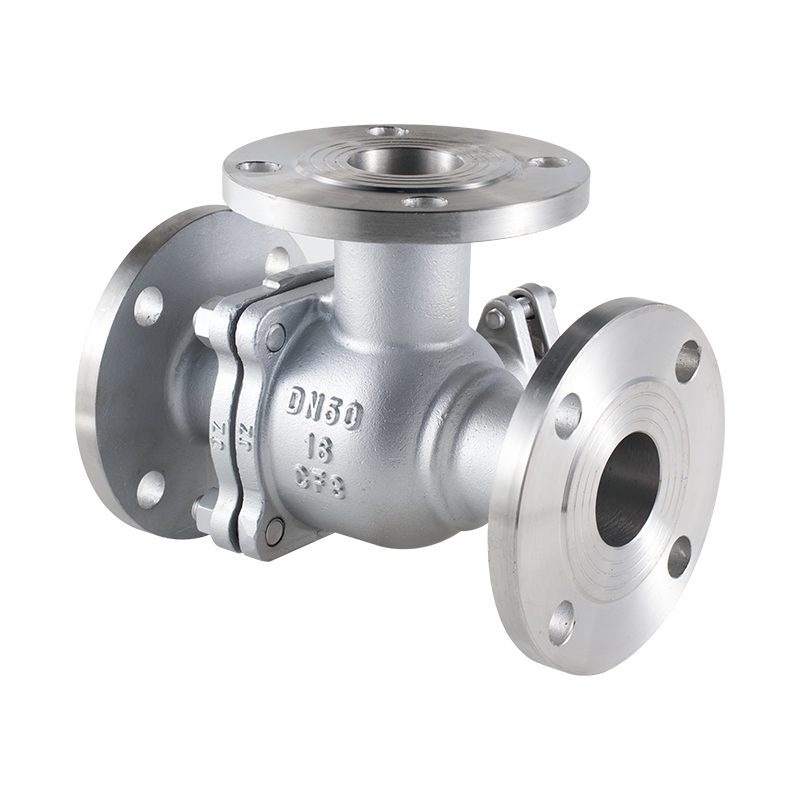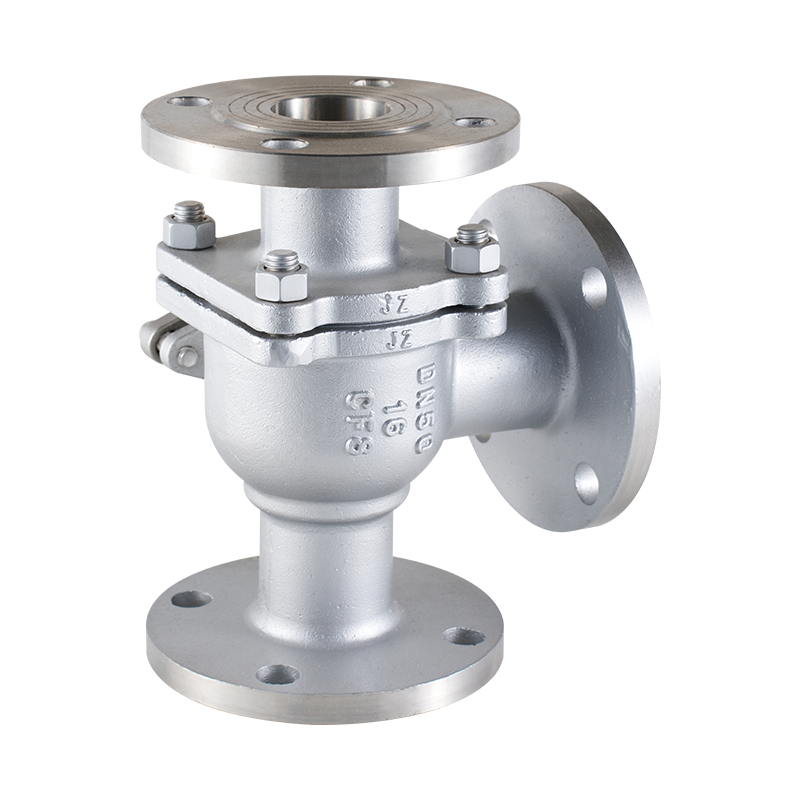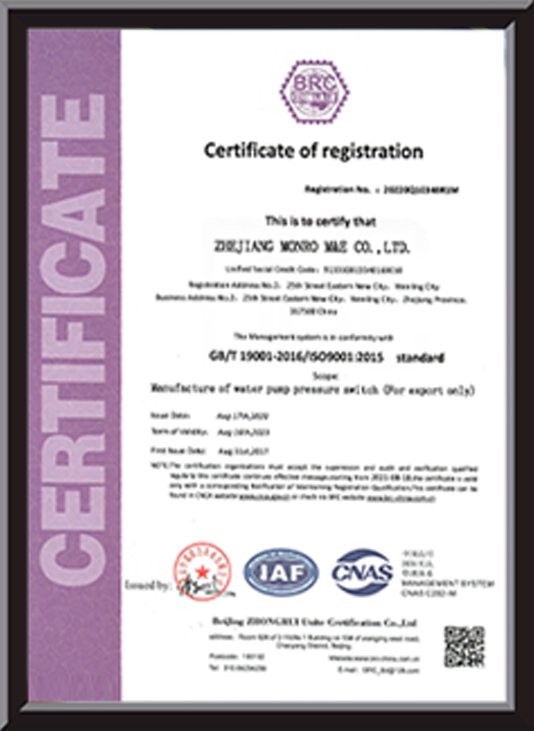Cast Steel Three-Way Ball Valves are engineered to provide precise control and flow management in complex industrial processes. These valves offer a range of benefits that make them indispensable in various applications.
Cast Steel Three Ways Ball Valve
1. Versatile Flow Control:
The three-way design allows for the control of flow in three different directions, making it ideal for applications requiring the mixing or diverting of fluids. This feature is particularly useful in processes where precise control over fluid ratios is necessary.
2. Durability and Strength:
Cast steel construction ensures that these valves can withstand high pressures and temperatures, making them suitable for use in demanding environments. The material's inherent strength and resistance to wear and tear contribute to the valve's longevity.
3. Corrosion Resistance:
Cast steel is known for its resistance to corrosion, which is crucial in applications where the valves may be exposed to corrosive fluids or environments. This resistance extends the valve's service life and reduces maintenance costs.
4. Leak-Proof Sealing:
Three-way ball valves typically feature a reliable sealing mechanism that prevents leaks, even under fluctuating pressure conditions. This is critical in maintaining process integrity and preventing environmental contamination.
5. Ease of Operation:
The operation of a three-way ball valve is straightforward, requiring only a quarter turn to open or close the valve. This simplicity reduces the potential for operator error and makes the valve easy to use, even in automated systems.
6. Compact Design:
Despite their complexity, three-way ball valves are designed to be compact, saving space in installations where space is at a outstanding. This compactness does not compromise their performance or durability.
7. Customization Options:
Cast steel three-way ball valves can be customized to meet specific application requirements, including different port sizes, flange configurations, and sealing materials. This flexibility allows for precise tailoring to the needs of the process.
8. Low Friction and High Flow Rates:
The spherical design of the valve less friction between the ball and the seat, allowing for high flow rates with less pressure drop. This efficiency is particularly beneficial in processes where flow rate is critical.
9. Maintenance-Friendly Design:
Cast steel three-way ball valves are designed for easy maintenance, with replaceable seats and seals. This feature reduces downtime and maintenance costs, as components can be replaced without replacing the entire valve.
10. Reliability and Longevity:
The combination of cast steel construction and advanced sealing technology ensures that these valves are reliable and long-lasting. They are designed to perform consistently over time, even in harsh conditions.
11. Wide Temperature Range:
These valves are suitable for a broad range of temperatures, from cryogenic to high-temperature applications. This versatility allows them to be used in diverse industries, including oil and gas, chemical processing, and power generation.
12. Safety Features:
Many three-way ball valves come with safety features such as blow-out-proof stems and fire-safe designs, which are crucial in preventing accidents and ensuring the safety of personnel and equipment.
In conclusion, Cast Steel Three-Way Ball Valves offer a combination of advanced flow control, durability, and reliability that makes them an good choice for a wide range of industrial applications.
Main Parts Materials
| Part name | Material name | |
| GB | ASTM | |
| Valve body | WCB | A216-WCB |
| Sealing ring |
PTFE、Para-polyphenylene |
|
| Ball body | 1Cr18Ni9Ti | SS 304 |
| Valve seat, Valve stem | 2Cr13 | A246-416 |
| Stud bolts | 35CrMoA | A193-B7 |
Performance Specifications
| Nominal pressure(MPa) | Experimental pressure | |||
| Shell | High-pressure liquid seal | Pressure gas seal | ||
| 1.6 | 2.4 | 1.76 | 0.6 | |
| 2.5 | 3.75 | 2.75 | ||
| 4.0 | 6.0 | 4.4 | ||
| CLASS150 | 3.0 | 2.2 | ||
| Applicable working conditions | Applicable medium | Water, oil, gas and other non-corrosive media and acid-base corrosive media | ||
| Applicable temperature | -28~350℃ | |||
| Application specifications | Connection flange | JB79-59、GB9113、HG20592-97、ANSIB16.5 | ||
| Inspection test | GB/T9092、API598 | |||
| The rest of the manufacturing specifications are in accordance with our factory standards. | ||||
Main dimensions and connection dimensions (mm)
| Nominal pressure or pressure level | Main dimensions | Nominal diameter(mm/in) | |||||||||||
| 15/1/2" | 15/3/4" | 25/1" | 32/11/4" | 40/11/2" | 50/2" | 65/21/2" | 80/3" | 100/4" | 125/5" | 150/6" | 200/6" | ||
|
PN1.6MPa PN2.5MPa PN4.0MPa Class 150 |
L | 150 | 150 | 180 | 200 | 220 | 240 | 260 | 280 | 320 | 380 | 440 | 50 |
| L1 | 75 | 75 | 90 | 100 | 110 | 120 | 130 | 140 | 160 | 190 | 220 | 275 | |
| H | 90 | 90 | 102 | 115 | 135 | 140 | 155 | 185 | 210 | 275 | 305 | 335 | |
| W | 140 | 140 | 155 | 250 | 250 | 350 | 350 | 420 | 700 | 1000 | 1300 | 1800 | |

With high-quality products, good reputation and high-quality service, our products sell well in more than 20 provinces, cities and autonomous regions in China. We sincerely cooperate with domestic and foreign merchants for win-win cooperation, common development and common prosperity.
In the future, Zhejiang Xiongxiang Valve will continue to uphold the concept of "quality-oriented, customer first", continue to innovate, work together with global partners for win-win results, and create a trustworthy fluid control brand!
-
Understanding the differences between a cast steel ball valve and its flanged variants is crucial for safe and efficient pipeline operation....
READ MORE -
Understanding the differences between a cast steel ball valve and its flanged variants is crucial for safe and efficient pipeline operation....
READ MORE -
Following proper installation and maintenance procedures is essential for maximizing the performance and service life of cast steel ball val...
READ MORE -
Proper selection of cast steel ball valve size and pressure rating is critical for ensuring reliable, safe, and efficient operation in indus...
READ MORE -
For industrial projects in the oil and gas sector, selecting the Correct cast steel ball valve is essential to ensure safety, reliability, a...
READ MORE -
In industrial applications, selecting the Correct cast steel ball valve is crucial for ensuring safe and efficient fluid control. For compan...
READ MORE

 English
English 中文简体
中文简体





